| Family: | Nymphalidae | Rafinesque, 1815 |
| Subfamily: | Satyrinae | Boisduval, 1833 |
The Nymphalidae is a family of several thousand species found in all zoogeographical regions of the world. Most are medium or large in size, but the family is highly variable given that it also includes the Satyrinae, a subfamily that has been designated as a family in its own right in earlier classifications.
The forelegs in both sexes are vestigial and useless for walking. In the male, there are typically only 2 tarsal joints and the legs have a brush-like appearance, resulting in a common name for this family - the "brush-footed butterflies". The female foreleg has 4 tarsal joints which, when compared with the male, provides a mechanism of determining the sex of the adult. The midleg and hindleg are normal in both sexes and both tibia and tarsus may have spines.
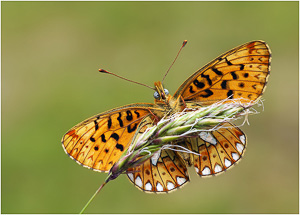 | 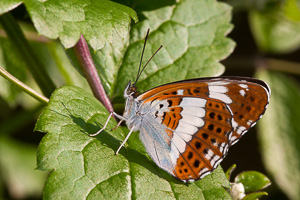 |
Pearl-bordered Fritillary (Boloria euphrosyne) | White Admiral (Limenitis camilla) |
The forewing always has 12 veins. Given the variability of this family, there are no further distinguishing characteristics that apply to the family as a whole.
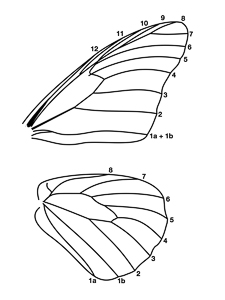 | 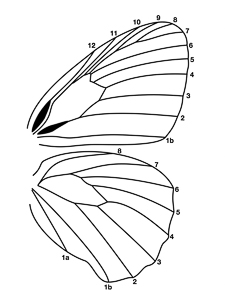 | 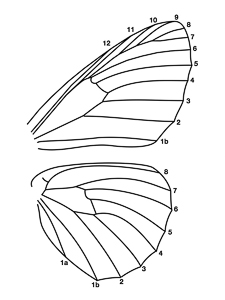 |
Nymphalidae (Danainae) | Nymphalidae (Satyrinae) | Nymphalidae (Nymphalinae) |
Photo © Timothy Freed, whose original drawings are shown in Moths and Butterflies of Great Britain and Ireland, Volume 7, Issue 1 (Emmet & Heath, 1989) |
Description to be completed.
This subfamily is represented by the following tribes:
This subfamily is represented by the following genera:
This subfamily is represented by the species shown below.